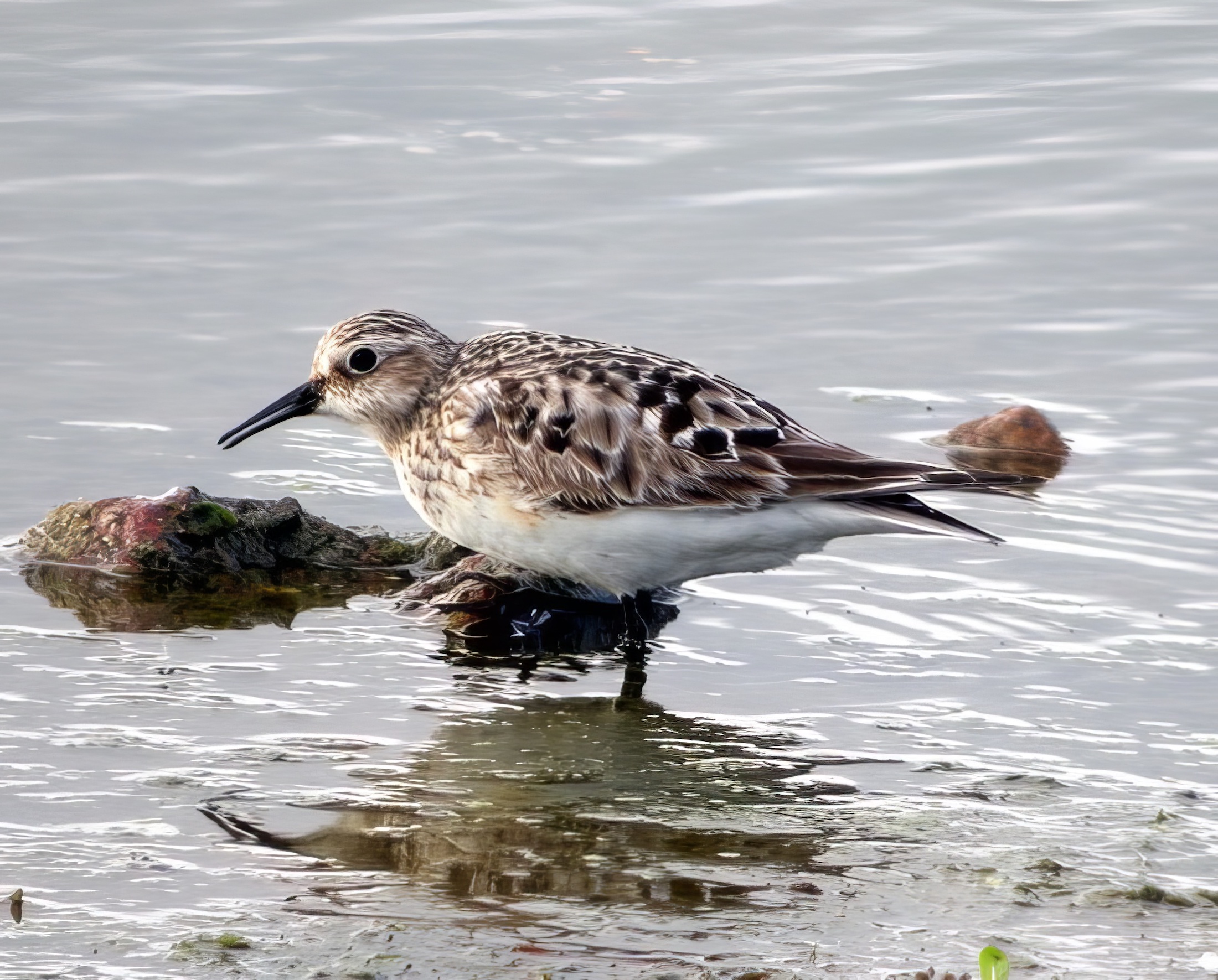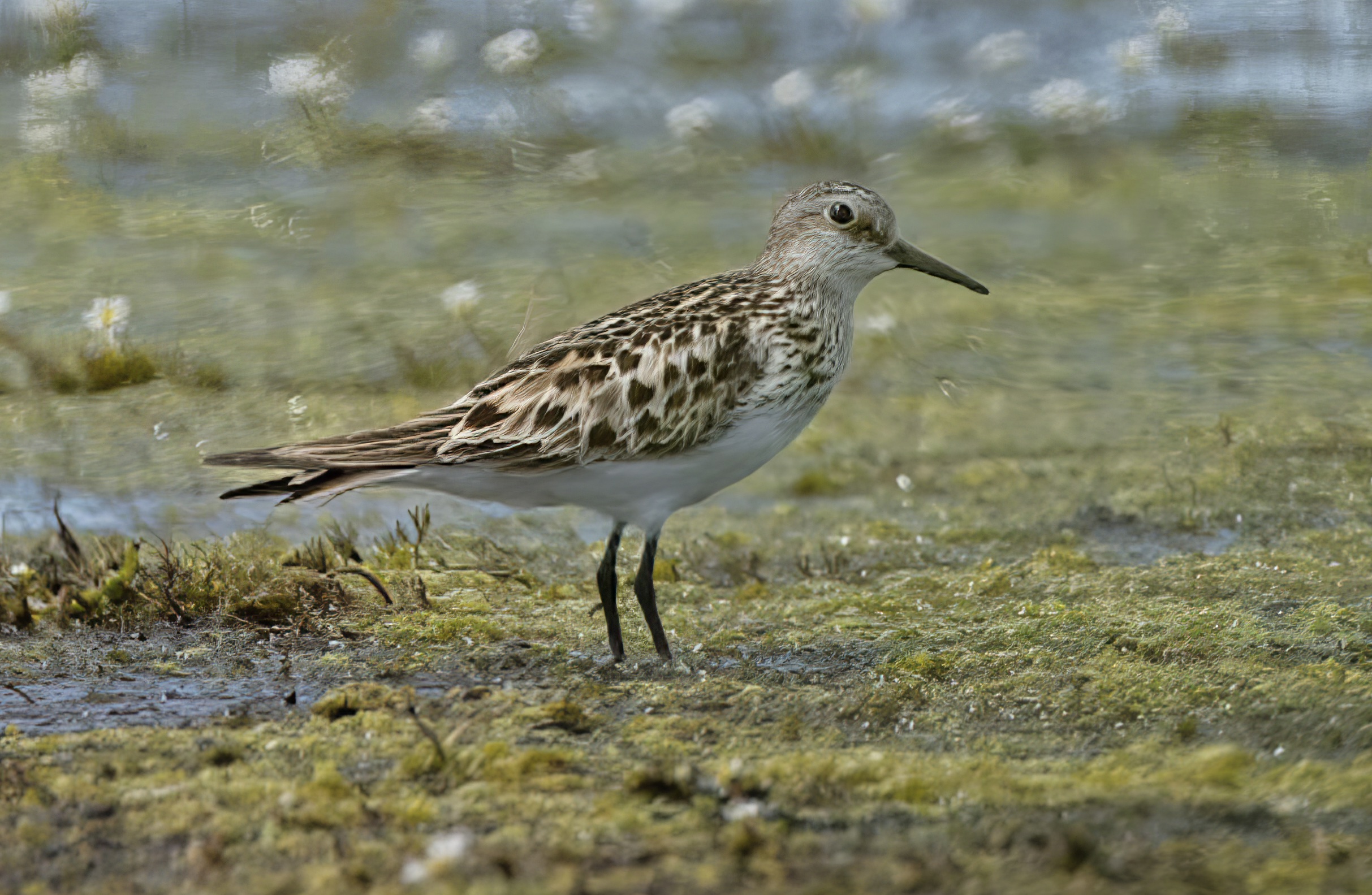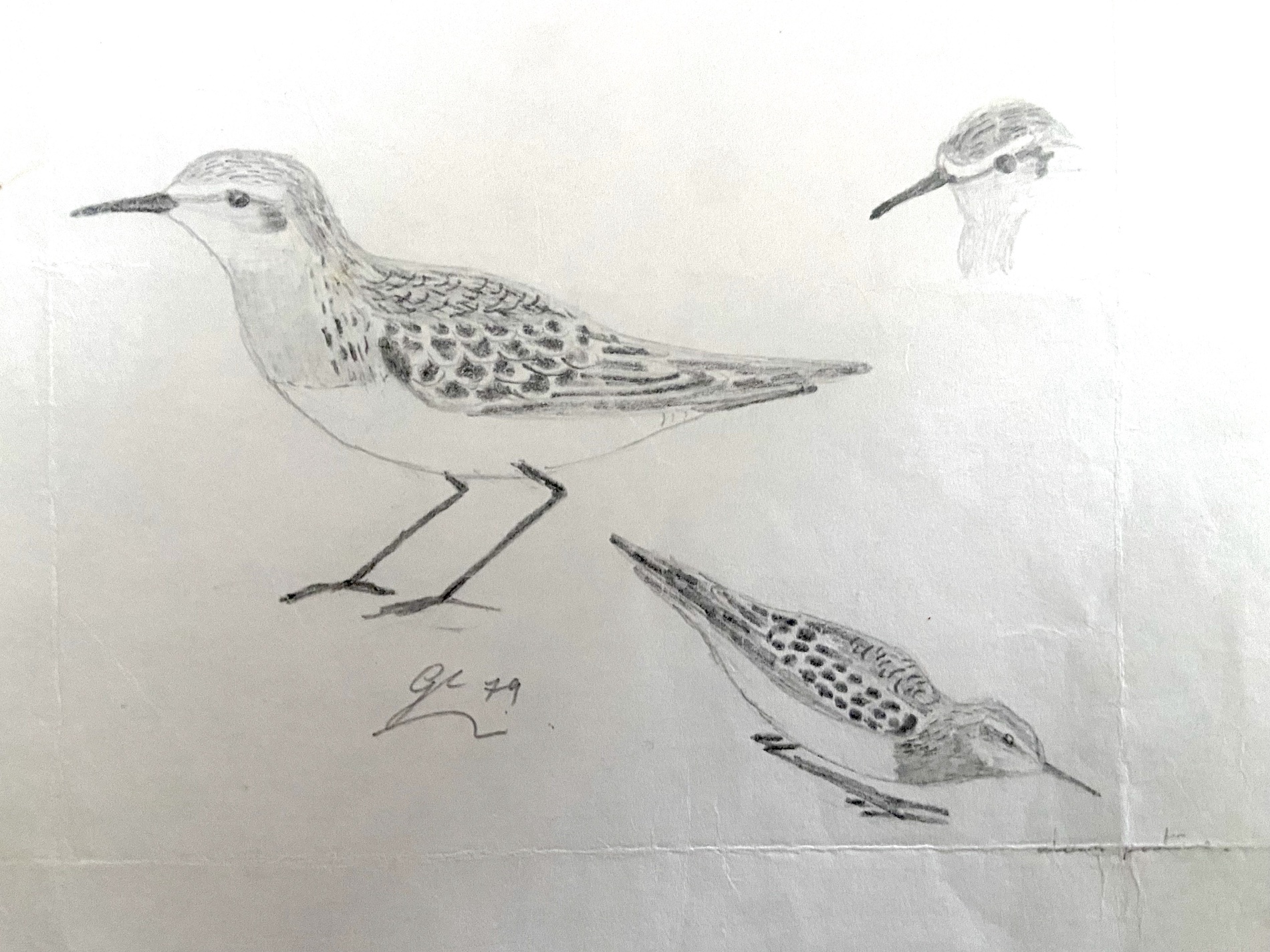Baird's Sandpiper Calidris bairdii


| Site | First date | Last date | Count | Notes |
| Wisbech STW | 22/07/1963 | 06/08/1963 | 1 | Adult |
| Bardney Beet Factory | 01/09/1966 | 08/09/1966 | 1 | Unaged |
| North Killingholme | 19/09/1979 | 20/09/1979 | 1 | 1CY |
| Kirkby GP | 19/09/2005 | 27/09/2005 | 1 | Adult |
| Frampton Marsh | 24/07/2013 | 26/07/2013 | 1 | Adult |
| Alkborough Flats | 21/06/2022 | - | 1 | Adult |
| East Halton | 14/10/2023 | 15/10/2023 | 1 | 1CY/juvenile; |
| Frampton Marsh | 21/08/2024 | 26/08/2024 | 1 | 2CY+ |
| Frampton Marsh | 04/09/2024 | - | 1 | 2CY+, same bird |
Finder’s report: Baird’s Sandpiper at North Killingholme Pits on September 19th, 1979
by G. P. Catley and D. A. Robinson.
Note: account from the original BBRC submission, this is the third county record. The year 1979 was the best year for Baird's Sandpiper thus far with five records, including the second ever in May and first ever in June.
Circumstances
First noted by GPC in the company of Dunlin and Ringed Plover at a distance of 40 m. Wind was a light W, force 2, light poor at first, with light rain, brightening later. Viewed through 10x40 binoculars and a 25-60+60 telescope.
Description
General - A very long, slim, neat buff and white wader, slightly smaller than accompanying Dunlin. Wings very long, overlapping tail considerably when closed and often overlaid. This, combined with the birds hunched, horizontal stance, flexed legs, short bill, and distinctive feeding behaviour gave it a very characteristic jizz. When feeding it either waded quickly with short steps in shallow water and weeds, or it walked on dry mud picking from the surface with several short sharp pecks. When alarmed it would squat like a Snipe with head held down and tail and wings up, looking upwards, with legs almost flat to the ground. In flight the very long wings stood out giving it a more leisurely manner than nearby Dunlin.
Head– bill short, less than the length of the head, black, straight but slightly decurved at the tip when seen close to. Crown buff with dark, blackish brown streaks going down on to the nape. Pale whitish supercilium, quite prominent and extending back over the eye, broadening behind eye, and meeting over bill to give a pale forehead. Dark brown line through eyes with dark patch at rear of ear coverts.
Underparts – throat pale buff, upper breast quite bright buff stopping abruptly at the white of the lower breast, forming a prominent pectoral band. Dark blackish streaks on upper breast especially on the sides forming a gorget effect round the neck. Lower breast and belly white, undertail coverts white with three faint vertical buff lines on sides of undertail coverts, visible at close range. Legs short and black.
Upperparts – dark brown with paler buff and darker black streaks. Rest of back and wing coverts dark blackish brown with prominent bright buff edges forming an interlocking scaly pattern. Dark blackish mark on the carpal joint visible at times on the closed wing. Flight feathers blackish brown with buff edges and tips. Tail dark blackish brown. Underwings pale whitish. Spread wing showed a faint, narrow white wing bar.

Original sketch of Baird's Sandpiper, North Killingholme Pits, September 19th, 1979 (G. P. Catley)
Reference
Rogers, M. J. and the Rarities Committee (1980). Report on rare birds in Great Britain in 1979. British Birds 73 (11): 491-534.
(Account as per new Birds of Lincolnshire (2021), included September 2022; records updated to 2022)

